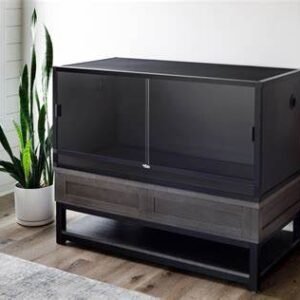leopard gecko tank
Essential Elements for a Leopard Gecko Tank
leopard gecko tank ,Creating an optimal habitat for your leopard gecko is crucial for its health and well-being. The first aspect to consider is the tank size. For a single leopard gecko, a 20-gallon terrarium is recommended as a minimum. This size provides adequate space for movement and exploration, which is vital for their physical and mental stimulation. If you plan to house multiple geckos, a larger enclosure will be necessary to prevent territorial disputes.
Choosing the right substrate is also an important consideration. Options such as reptile carpet, tiles, or paper towels are favored, as they are easy to clean and do not pose a risk of ingestion, which can lead to serious health issues. Avoid using sand or loose substrates, as these can cause impaction if ingested while the gecko hunts for food.
Temperature gradients are essential for a leopard gecko’s well-being. Your tank should maintain a warm side with temperatures ranging from 88°F to 92°F, using under-tank heaters or heat mats. The cooler side should ideally be between 72°F and 80°F. It is also recommended to incorporate a basking lamp to provide a spot for your gecko to thermoregulate. Monitoring the temperatures with reliable thermometers ensures that your pet has access to both warm and cool areas, promoting a healthy lifestyle.
As leopard geckos are naturally secretive creatures, incorporating decorations and hiding spots is critical. Use items like herb pots, rocks, or commercial hides that replicate their natural environment, giving them a sense of security. Additionally, providing shallow water and food dishes ensures they stay hydrated and nourished. Lastly, proper ventilation is essential in preventing humidity build-up and maintaining a healthy living environment.
Maintenance and Care for Your Leopard Gecko Tank
leopard gecko tank ,Maintaining a clean and healthy environment in your leopard gecko tank is paramount to ensuring your pet thrives. Regular cleaning should be part of your routine; you need to remove waste daily, as this helps prevent the buildup of harmful bacteria. Spot cleaning should specifically target areas where your leopard gecko frequents for feeding and basking. At least once a week, perform a deeper clean by removing accessories and thoroughly disinfecting the surfaces with reptile-safe cleaners or a diluted bleach solution, followed by a rinsing to eliminate any residues that might irritate your pet’s skin.
The substrate in the tank, whether sand, paper towels, or reusable options, plays a pivotal role in both aesthetics and functionality. It is advisable to change the substrate completely every four to six weeks, depending on the material used and your gecko’s habits. Always ensure the substrate is free from mold or feces, as these can compromise the health of your leopard gecko. Additionally, regularly check heating elements and humidity gauges. Malfunctioning equipment can affect your leopard gecko’s health, as temperature and humidity are critical factors for their comfort and metabolism.
Monitoring temperature and humidity levels is essential, particularly since leopard geckos require a temperature gradient within their habitat. Utilize thermometers and hygrometers to keep an eye on these variables. During seasonal changes, you might need to adjust your heating and humidity setup to maintain optimal conditions, helping to prevent stress. Furthermore, be vigilant for any signs of distress or illness in your gecko, which may include lethargy, abnormal eating habits, or visible physical changes. Promptly addressing these signs can significantly impact their overall well-being, ensuring a long and healthy life for your pet in captivity.
Showing the single result
-
Reptile Supplies & Accessories
4x2x2 (120 Gallon) Leopard Gecko Enclosure V2
Original price was: $199.00.$169.00Current price is: $169.00. Add to basket

